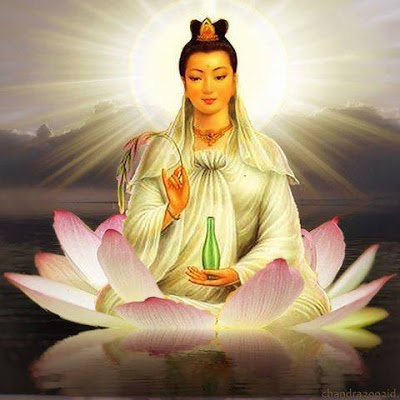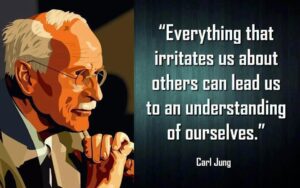BY RENÉ WADLOW
Celebrating Kuan Yin: Goddess of Compassion and Harmony
Wise is using skillful means, in every corner of the world, she manifests her countless forms
The 19th of February, in countries influenced by Chinese culture, is a day devoted to honoring Kuan Yin, goddess of compassion “ she who hears the cries of the world and restores harmony.” She is a goddess for the Taoists and a bodhisattva for the Buddhists but she represents the same values of compassion for both faiths. There has been mutual borrowing of symbols and myths between the two groups, as well as an identification with Mary in countries with a Roman Catholic minority such as Vietnam and with Tara among the Tibetans.
From the Taoist tradition, she is associated with running water and lotus pools. Many of her virtues come from Buddhist teachings:
“Wrathful, banish the thought of self
Sad, let fall the causes of woe,
Lustful, shed lust’s mental object,
Win all, by simply letting go.”
As in this Chinese verse reflecting her advice, many Buddhist values are phrased negatively: abobha (non-greed), adosa (non-hatred), amoka (non-delusion), less frequently in positive values metta (loving kindness), karuma (compassion), mudita ( happiness in the good fortune of others).
Yet Kuan Yin is associated with active compassion as a driving force of action, where all, including the least of living things, are treated with fairness and consideration and where the broader currents of life move toward harmony and equilibrium.
While most of the myths and ex-voto paintings found in temples show Kuan Yin helping individuals in times of stress or danger, there is also a broader, more political-social aspect to her efforts to restore harmony and balance. Today, at a time when humanity is increasingly working together to meet ecological challenges and to overcome ideologically-led strife, the spirit of Kuan Yin presents to us an important call for a cultural renaissance based on the concept of harmony. Rather than concentrating primarily on conflicts, struggles, and suffering, the spirit of Kuan Yin suggests that the focus should be on cooperation and visions of a better future. Harmony includes tolerance, acceptance, equality, and forgiveness of past pains and conflicts. The spirit of Kuan Yin leads to gentleness, patience, kindness, and inner peace.
We are fortunate to be able to participate in a crucial moment in world history when the law of harmony, that is the law of equilibrium, is being increasingly recognized and understood. Harmony is the key to our ascent to the next higher level of human consciousness: harmony between the intellect and the heart, the mind and the body, male and female, being and doing.
For the conscious restoration of equilibrium, we must understand the lack of harmony particular to each society and to each segment of the society. It may be a lack of balance in the goals to be reached and the means to reach these goals. It may be a lack of balance between thought and action, or it may be a lack of balance between the role of women and men.
The efforts to restore harmony can often be long for there are structures and institutions which, though lifeless, take a long time to crumble. One needs patience. Yet, there are, at times, unexpected breakthrough and shifts. Thus, one must always be sensitive to the flow of energy currents.
Thus as we mark 19 February to honor Kuan Yin, we also develop a new spirit of cooperation for the creation of a cosmopolitan, humanist world society. Social harmony is inseparable from the values of respect and understanding, of goodwill, and of gratitude toward one another.





